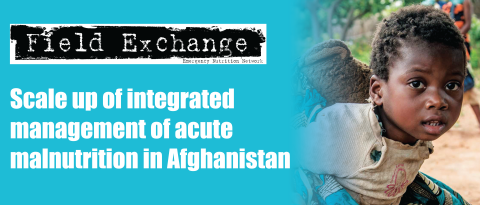en-net update
By Tamsin Walters, en-net moderator
Over the past three months, 37 questions have been posted on en-net, generating 59 responses. The forum areas for Prevention and management of moderate acute malnutrition and Assessment generated most discussions. Twenty-six vacancy announcements have been posted, which have accumulated 8,474 views on the website.
An interesting discussion arose from what seemed a relatively straightforward question in the Prevention and management of severe acute malnutrition area. The question was asked, in a health facility where there are both severe acute malnutrition (SAM) and moderate acute malnutrition (MAM) services, under which criteria should we classify discharge of an admitted SAM case who reaches the anthropometric criteria for transfer to MAM? Should such a case be discharged as “cured” to provide data on the SAM cure rate, or as “transferred to SFP-MAM”, which would result in a zero SAM cure rate?
Contributors to the discussion suggested various ways to approach this. Reference was made by the en-net technical moderator to a paper by Maust et al (2018) reporting on integrated programming in Sierra Leone, which examined two different protocols: ‘standard’ management and ‘integrated’ management.
In standard management, a child is transferred from an outpatient therapeutic programme (OTP) to a supplementary feeding programme (SFP) with a mid-upper arm circumference (MUAC) >11.5cm or weight-for-height Z-score (WHZ) > -3, being considered as “discharge cured”. The child is later discharged “cured” from SFP with a MUAC of >12.5cm or WHZ >-2. This approach is used where there are two different treatment programmes in different locations.
This approach is potentially problematic because the use of MUAC >11.5cm/WHZ >-3 as standalone criteria has not been shown to be safe for discharge, so categorising a child as “cured” using just these anthropometric markers (unless combined with some other criteria such as a minimum stay + absence of oedema + clinical wellness, etc.) represents a risk and is not supported by existing evidence. Moreover, the intention in the programmes, although they are separate, is to continue treatment in SFP after OTP and as such the child is not truly discharged from treatment until cure is obtained in SFP.
In the integrated protocol, a child receives graduated treatment depending on whether they are SAM or MAM and recovery for MAM + SAM is reported together and compared against sphere standards. In this model, the same health facility conducts the full treatment.
There are potential difficulties with reporting in the integrated scenario when using Sphere standards because the acceptable mortality rates for OTP and SFP are different, which may cause problems if there is a mortality rate greater than three per cent in OTP. Combined reporting is one option; another is reporting the negative outcomes for the OTP and SFP components separately.
Using either approach, the criterion of “transferred to SFP” would be considered a successful outcome for OTP, though it is not the same as “cured” and should not be reported as such. A child cannot be cured twice from one episode of acute malnutrition, so reporting needs to consider the community-based management of acute malnutrition (CMAM) programme as a whole (and see recovery as a continuum), rather than considering each component as a different programme. The narrative that accompanies programme monitoring data can clarify this in reporting and in this way a combined recovery rate could be reported for OTP and SFP.
In summary, reporting depends on having clarity in terms of the nature and design of the programme and the purposes of reporting (e.g. to donors or to national databases). There are many ideas on how to report and protocols aiming for standardisation, but there is a need to think clearly about what we are actually reporting on.
If the aim is for graduated programmes where a child with SAM is treated as MAM when their MUAC reaches >11.5cm or WHZ >-3, then a step change is needed in the way we report. Although the concept of reporting recovery for OTP and SFP combined is controversial, it more closely resembles the reality of the intended continuum of care. Reporting negative outcomes separately (for OTP and SFP) also has validity, since the factors for default, death and non-response may be different for each phase of the graduated treatment. This is clearly seen when we have “early” or “late” defaulters in OTP for different reasons, for example.
This discussion also raised a caution to ensure that a child originally identified as SAM for treatment should be considered a “recovering SAM” case when their condition improves, rather than being reclassified as an “SFP-MAM” case. Changing the classification of a SAM child to MAM on the basis of anthropometric cut-offs achieved overlooks the child’s history of profound physiological compromise. Likewise, any discharge criterion should also ensure a focus on physiological recovery.
To read more or join this discussion, go to www.en-net.org/question/3185.aspx
To join any discussion on en-net, share your experience or post a question, visit www.en-net.org or www.fr.en-net.org
To give feedback on the site, please write to post@en-net.org
Contributions
Sameh Al-Awlaqi, Tammam Ali Mohammed Ahmed, Paul Binns and Dr Narendra Patil.
References
Maust A, Koroma AS, Abla C, Molokwu N, Ryan KN, Singh L and Manary MY. Severe and Moderate Acute Malnutrition Can Be Successfully Managed with an Integrated Protocol in Sierra Leone. Journal of Nutrition September 30, 2015. American Society for Nutrition. https://publichealth.wustl.edu/wp-content/uploads/2014/08/NnekaPubJN.pdf


